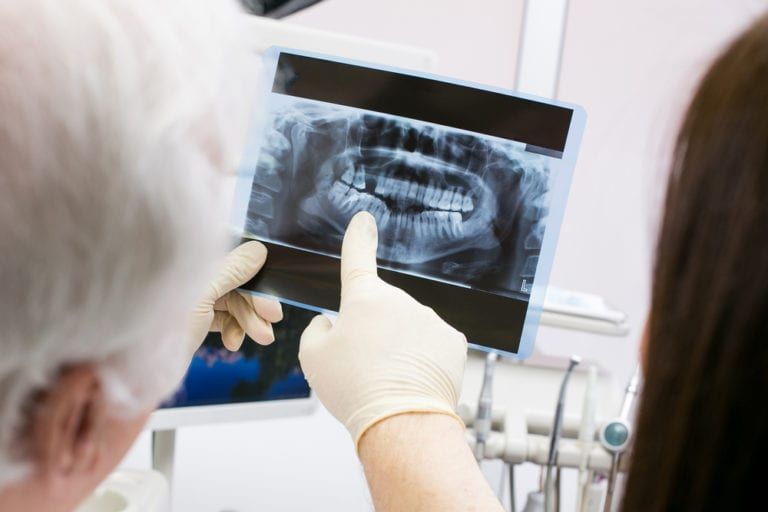Dental Radiographs

For years, dental radiographs have been used to diagnose oral health complications and detect decaying or damaged teeth. Radiographs provide a unique view of the mouth that isn’t possible with a visual exam alone. When radiographs are taken, the teeth and bones absorb the majority of the ray, making them highly visible on film or on a screen. Nearly all new dental patients are radiographed, although you may instead request that previous radiographs be transferred from another dental provider to your new dentist. By comparing your radiographs with your full mouth examination and dental history, your dentist can prescribe effective treatment and recommend a plan for preventative care.
Did you know…
that dental radiographs deliver very low levels of radiation and are considered completely safe? In fact, x-rays are even considered safe during pregnancy and while breastfeeding so long as a leaded apron and collar are used to protect your body from exposure. If you are pregnant or think you may be, tell your dentist so proper precautions can be taken.
Frequently Asked Questions
Should I get dental radiographs?
Yes. Dental radiographs are capable of identifying tooth decay and damage beneath the surface of the teeth where caries are less visible during an examination. Furthermore, radiographs provide a reference point for the progression of decay in your mouth over time. You should have radiographs taken on a regular basis, but especially if you are experiencing oral health complications or are planning to undergo a dental procedure, such as a root canal.
What should I expect when I get radiographs?
Getting traditional dental radiographs can take several minutes. A thick paper tab is placed into the mouth, which you will be asked to bite down on. Most patients find that dental radiographs are completely painless and do not inflict any level of discomfort. In some cases, dentists intraoral radiographs, as well as extra-oral radiographs that snap images of the face, jaw, and skull. Extra-oral radiographs are typically used to identify impacted teeth, such as wisdom teeth.
What happens after my dentist has taken radiographs?
Your radiographs will be saved either on film or digitally. In the future, your dentist may request additional dental radiographs to monitor the health of your teeth, gums, and jaw over time. If you are considered to be at high risk for oral disease or are exhibiting symptoms of complications, your dentist may prefer to take radiographs more frequently.
